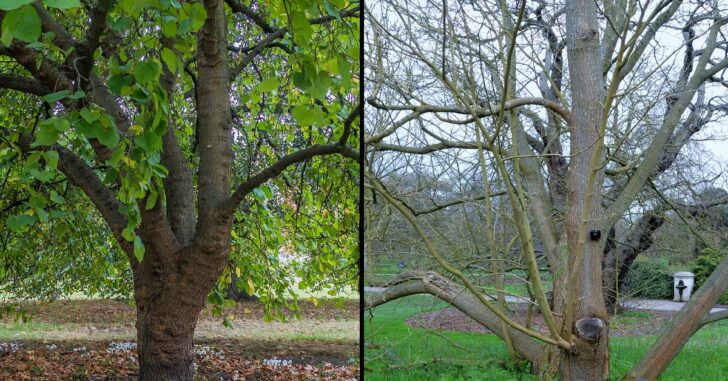Mulberries are deciduous trees native to warm temperate and subtropical regions of the world.
The mulberry tree offers timber for fire, fruity smoke for the senses, and fruit for the tongue. Yeah! Once you have it, you have an unsung hero by your side.
Mulberry wood is also known for its good natural shine and is rated as the most durable wood that comes with insect resistance and weather resistance properties.
How does this happen, because mulberry has no odor for insects, but a sweet and sour aroma for humans. In use, it is used to transform from small pens into larger decorative pieces.
FYI: Although mulberry wood is soft in appearance, it is tough and strong when it comes to durability.
Need to know more?
Here is a detailed guide on everything you need to know about mulberry trees.
Table of Contents
Mulberry Wood:
All wood burns and hence mulberry but is generally well thought of as the most important firewood. It burns better than other trees such as acacia.
Since it burns slowly and steadily, it is excellent for producing long-term heat and coal, providing warmth for a long time.
It’s perfect for campfires and cooking, but is recommended for outdoor fireplaces as mulberry sparks very harshly.
FYI: Due to the excessive production of mulberry pollen in 1984, their cultivation was banned by the Arizona and Tucson government as considered harmful to humans. However, the mulberry fruit is edible for humans and is used to make jams, jellies, and marmalades.
Mulberry Tree Types:
If we go in a broad direction, we find two main varieties of mulberry trees. One is a fruity mulberry tree and the other is a fruitless mulberry tree.
However, when it comes to the use of the mulberry tree and the importance of this miraculous tree, we find three fruitless varieties of mulberry tree as follows:
Here are some tree species you can get from mulberry trees:
1. White Mulberry:
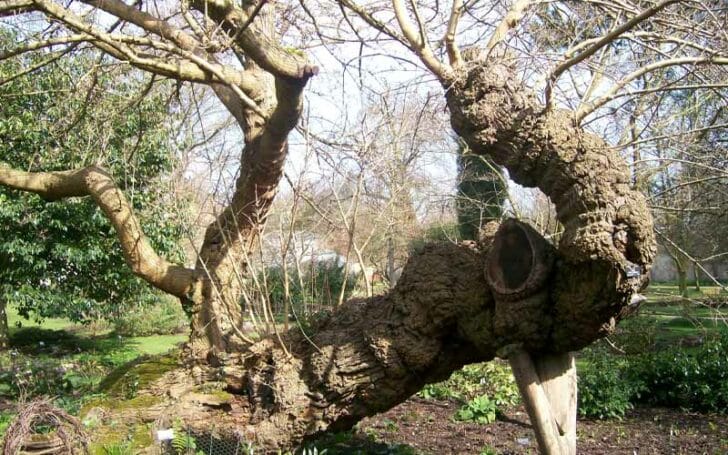
Scientific name: Morus alba
Common name: white mulberry, common mulberry, silkworm berry
Native: China
Edible Fruits: Yes, it produces fruit of variable color (white, pink, black and red)
Flowers: Yes
Age: Short-lived tree (60 to 90 years)
Tree Size: 33 – 66 ft. tall
BTU: High
Common Use: Firewood, baskets, pens, pencil making, silkworm bait, tea preparation
White mulberry trees are very easy to grow and require minimal maintenance. It takes a minimum of time to grow.
It can grow well even in dry soils and sprout well in just 4 hours of sunlight, making it ideal for vegetated areas and gardens.
Although native to China, Morus alba is native to the United States, Mexico, Australia, Kyrgyzstan, Argentina, Turkey, Pakistan, Iran, India, etc. It can be obtained widely and easily in countries.
Morus alba is called white or silkworm berry because of its white flower buds and because its fruits and leaves are commonly given to silkworms as food.
2. Black Mulberry:
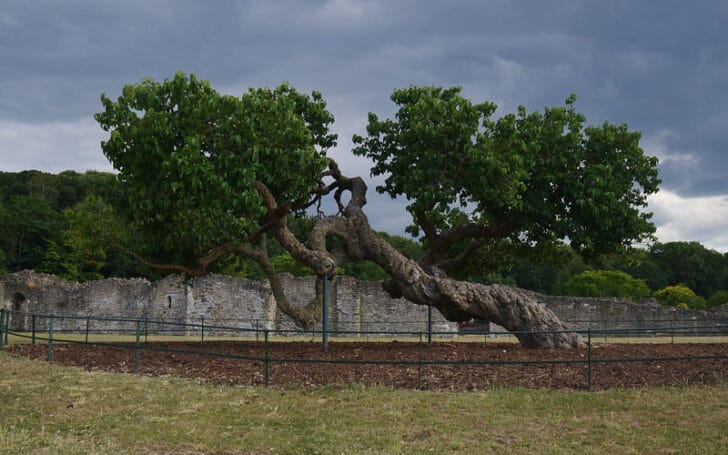
- Scientific name: Morus nigra
- Common name: Black Mulberry, Blackberry (not the Rubus family berries)
- Native to: Southwestern Asia, Iberian Peninsula
- Edible Fruits: Yes, Dark purple, blackish
- Flowers: Yes
- Age: Hundreds of years
- Tree Size: 39 – 49 ft
- BTU: high
- Common Use: edible fruits,
Black mulberry or Morus nigra is the longest-lived variety of mulberry fruit. However, it also takes years to mature.
The tree is grown mainly in Asia, Europe, America and other southern regions of the world for its ripe and delicious fruit.
Mulberry trees grow very tall and provide excellent shade and fruit to lean on, making them great choices for enjoying summer.
3. Red Mulberry:

- Scientific name: Morus rubra
- Common name: Red mulberry
- Native to: eastern America, central North America, Florida, Minnesota
- Edible Fruits: Yes, plate green ripening to dark purple
- Flowers: green leaves, turn yellow in autumn
- Age: up to 125 years
- Tree Size: 35–50 ft tall but can go up to 65 ft in rare cases
- BTU: High
- Common Use: wines, formation of jams, jellies, and marmalades, firewood, furniture, fences, woodturning objects
The red berry once again produces ripe berries that are used to make jams, jellies, juices and wines.
However, its hardwood is used to make furniture, bowls, baskets and fencing items for gardens and balconies.
Wood is also used to make pool cabins and backyard pavilion designs.
4. Korean Mulberry:
- Scientific name: Morus latifolia
- Common name: Korean mulberry
- Native to: China, Japan, and Korea
- Edible Fruits: Yes
- Flowers: Yes
- Age: unknown
- Tree Size: 24 ft and 4 inches
- BTU: High
- Common Use: edible fruits, and tea, making paper
Korean mulberry or Kokuso trees also produce delicious dark fruit that can be up to 2 inches long. This is the berry from cold regions.
Apart from that, the Korean mulberry tree produces excellent timber for fire and is also used in the formation of papers.
5. Himalayan Mulberry:
- Scientific name: Morus Serrata
- Common name: Himalayan mulberry
- Native to: mountains of Himalaya, and china
- Edible Fruits: Yes
- Flowers: Yes
- Age: 100 to 250 years
- Tree Size: 15 m tall
- BTU: High
- Common Use: Edible fruits
Although it can be up to 15 meters tall, you can call it Himalaya, which is a dwarf mulberry variety because it produces sweet and juicy fruits that grow in clusters.
Some researchers consider the Himalayan berry not as an independent species, but as a subspecies of white or black mulberry. However, the species grows at high altitudes and is an excellent food for tourists and climbers.
Mulberry Tree Identification:
As different types of mulberry trees are available, the texture and appearance of the wood also varies.
Here’s what you need to know about mulberry tree diagnosis.
1. Mulberry Wood Color Appearance:
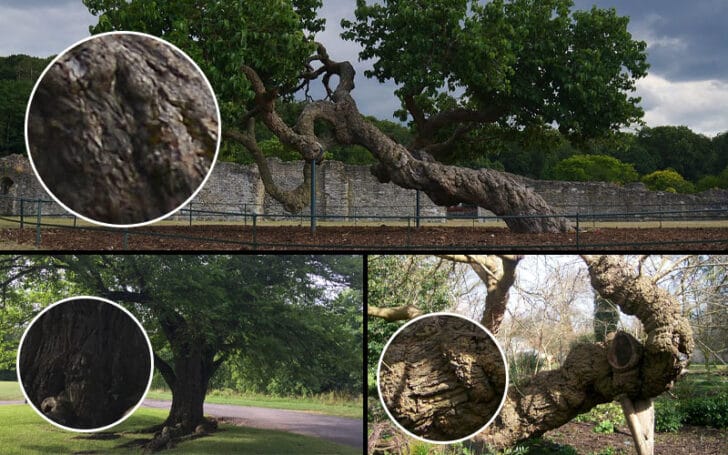
The appearance of wood varies from one tree species to another. Red berry is mainly used for making furniture and household items.
The appearance of the red berry is initially golden brown and as time passes it changes to a dark brown to medium reddish shade. The outer layer of the sapwood may be pale.
On the other hand, you can identify the black mulberry by its uniform hairy lower leaf surface, and the white mulberry tree by its rapid pollen release.
2. Mulberry Wood Grains Appearance
The appearance of the mulberry tree is naturally bright and there is a uniform vein texture in the raw wood logs.
It has the appearance of smooth uniform grain texture.
You may also find small cracks on the surface of mature mulberry trees. It is common for these cracks to appear on the surface of wood as it ages.
3. Mulberry Wood Odor:
Since the mulberry tree bears ripe mulberry fruits with a very pleasant smell, the wood also has a pleasant smell.
The wood has no characteristic odor when dry, but mulberry wood smoke is not sour or pungent when burned.
4. Durability:
Mulberry is not used as lumber as in furniture making or flooring, due to its smaller size and dispersed distribution. However, this does not mean that wood is not durable.
Mulberry wood is extremely durable, insect-proof and weatherproof.
In addition, the mulberry tree is resistant to insects and weathering. This excellent durability and scarce dispersion makes the mulberry the most expensive wood in the world.
5. Sap Content/ Resin:
The sap content or resin in mulberry wood is as high as in firewood. Sometimes you can see resin coming out of the trunk of your mulberry tree.
Mulberry tree bleeds more due to infection. Also called latex, this resin, sap, or juice can be mildly toxic.
6. Mulberry Wood for Woodturning:
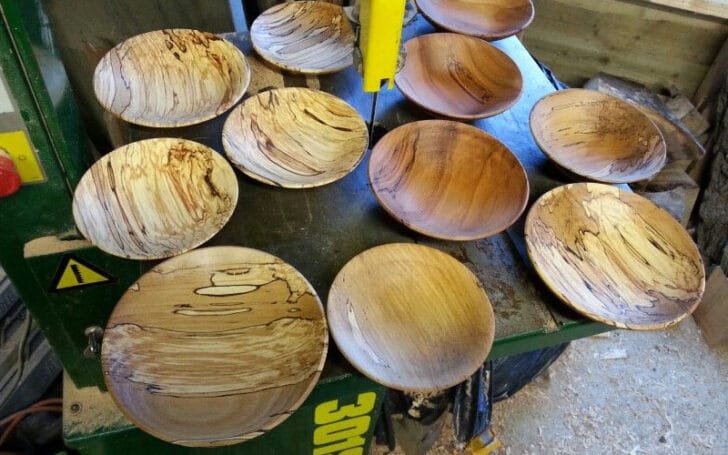
Large mulberry species produce larger boards that can be used in wood turning and furniture making.
Although it costs a little, evergreen tables, chairs and benches are examples of the use of mulberry in woodworking.
It is also used in the production of bowls and lathes such as olive wood.
However, working with wood is not very easy. You have to be very professional and expert to work with it because sometimes a simple nail can split the board in half.
Mulberry Tree’s Best Feature or Feature:
The best part about mulberry wood is that it doesn’t require any artificial colors or finishes. As time goes by, it comes in a naturally bronze and attractive looking color.
Now you start with Mulberry Tree Uses:
Mulberry Wood Uses:
The best and most common use when it comes to trees is to grow mulberries for their ripe and edible fruit.
On the other hand, the usage areas of the mulberry tree are as follows:
- Mulberry wood furniture such as leafy tables, chairs and benches
- Rotated objects (bowls, baskets, pots and containers)
- fence posts for balconies and gardens
- White mulberry is mainly used as a silkworm food source.
- To produce pages and pages
- Pen, ballpoint pen and prison
- Bird Feeder and cages
- firewood,wood logs,outdoor seating chair
Before we end, here are the FAQs our readers sent us:
1. Is Mulberry Hard or Soft Wood?
Although mulberry wood is soft, it is considered a hardwood because tall mulberry trees offer wood that can produce large boards for making furniture.
2. Is Mulberry Wood Rot Resistant?
Not all mulberry trees are rot resistant and are not used commercially for furniture making. However, red berry is extremely resistant to rot and is used for outdoor molding and applications.
3. Is Mulberry wood good for turning?
The mulberry tree is great for spinning and making spinning objects. Mulberry wood makes wonderful natural rimmed bowls.
Mulberry wood is good for turning only when the sapwood is creamy and fresh. It changes from amber to dark brown when exposed to sunlight.
4. Why are mulberry trees illegal?
Not all mulberry trees are illegal, but the growth of white mulberry in Arizona and some other parts of the United States has been outlawed due to excessive pollen spread.
5. Is Mulberry Is A Good Firewood?
Mulberry is an incredible firewood with a BTU of 25.8 that produces admirably high heat. It is among the best heating firewood.
The best part of the mulberry tree is that it burns slowly and gives warmth for a long time. Also, the mulberry tree makes an excellent source of charcoal.
6. How to Burn Mulberry Wood?
Mulberry wood is great at burning and doesn’t produce a lot of smoke. But make sure the mulberry tree is completely dry before burning it. Otherwise, he may smoke more than necessary.
However, make sure that the mulberry tree is burned in the outer wood as it can generate a lot of sparks and burn or catch fire.
Bottom Line:
That’s why we’ve talked about almost all the possible things you can do using a mulberry tree. Any other ideas? Let us know in the comments below.
Also, don’t forget to pin/bookmark and visit our blog for more interesting but original information.

